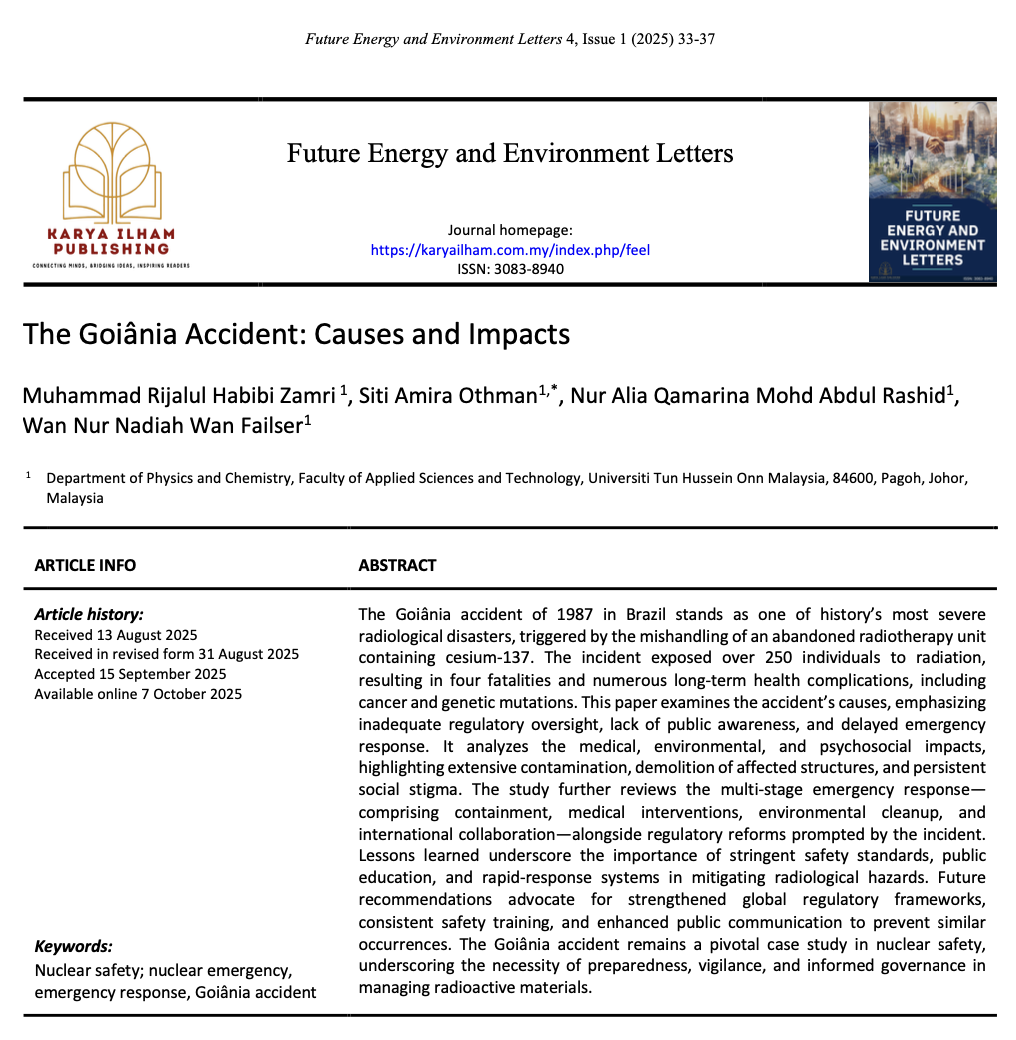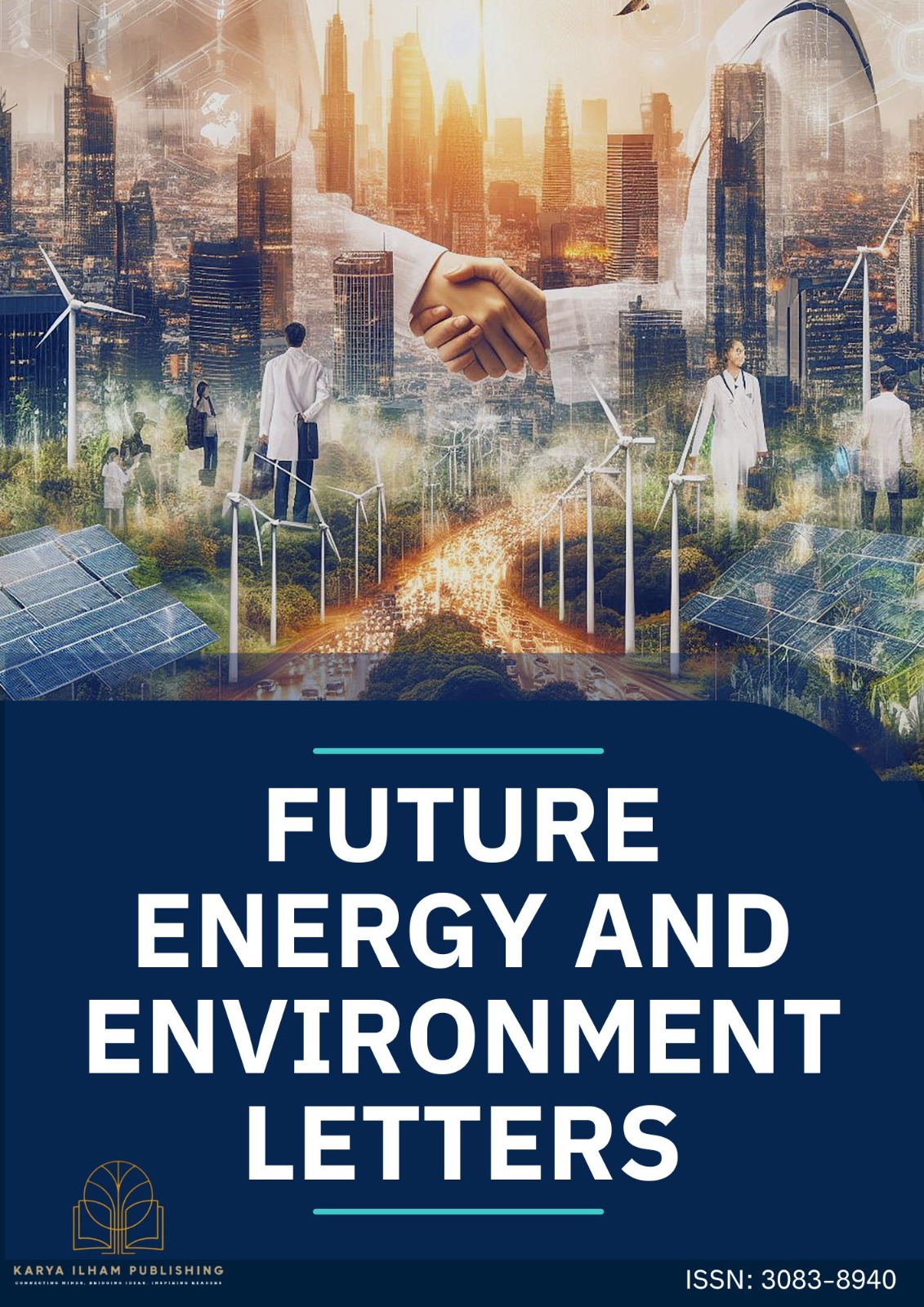The Goiânia Accident: Causes and Impacts
Keywords:
Nuclear safety, nuclear emergency, emergency response, Goiânia accidentAbstract
The Goiânia accident of 1987 in Brazil stands as one of history’s most severe radiological disasters, triggered by the mishandling of an abandoned radiotherapy unit containing cesium-137. The incident exposed over 250 individuals to radiation, resulting in four fatalities and numerous long-term health complications, including cancer and genetic mutations. This paper examines the accident’s causes, emphasizing inadequate regulatory oversight, lack of public awareness, and delayed emergency response. It analyzes the medical, environmental, and psychosocial impacts, highlighting extensive contamination, demolition of affected structures, and persistent social stigma. The study further reviews the multi-stage emergency response—comprising containment, medical interventions, environmental cleanup, and international collaboration—alongside regulatory reforms prompted by the incident. Lessons learned underscore the importance of stringent safety standards, public education, and rapid-response systems in mitigating radiological hazards. Future recommendations advocate for strengthened global regulatory frameworks, consistent safety training, and enhanced public communication to prevent similar occurrences. The Goiânia accident remains a pivotal case study in nuclear safety, underscoring the necessity of preparedness, vigilance, and informed governance in managing radioactive materials.







